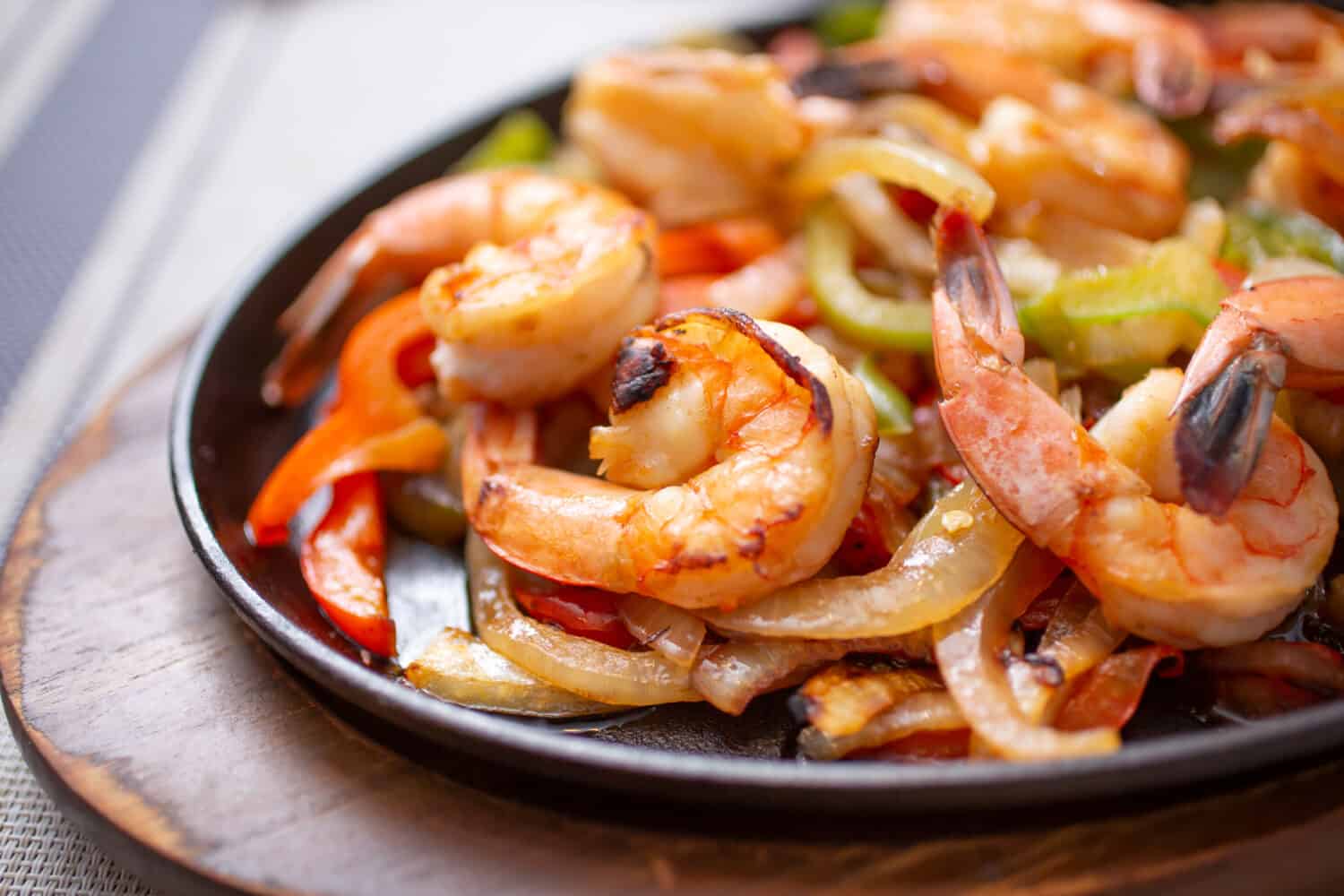Texas is the second-largest state in America in area, after Alaska, and in population, only California is bigger. It’s also one of the most mythic — a fabled place famous for so many things, like oil, cattle, The Alamo, “Dallas,” cowboys and The Cowboys, NASA, the live-music capital of Austin…and of course food and drink.
You might be surprised at some of the things we happily consume around the nation that were invented or developed in Texas. Barbecue is at the top of the list, but there’s so much more. Here’s a list of a dozen good Texas-born things to eat and three to drink. (The origin stories of some of these are disputed, but we’ve depended on the most reputable sources available for our information.)
We’re not including the thriving, ever-better Texas wine industry (the first vines were planted here by missionaries in the 1650s, and there are now more than 1,000 wineries in the state) or those two quintessentially American if diametrically different food purveyors — 7-11 and Whole Foods, both with roots here.
What you will find here is a roster of some of the most delicious pleasures of the table, all courtesy of the Lone Star State.
BBQ brisket
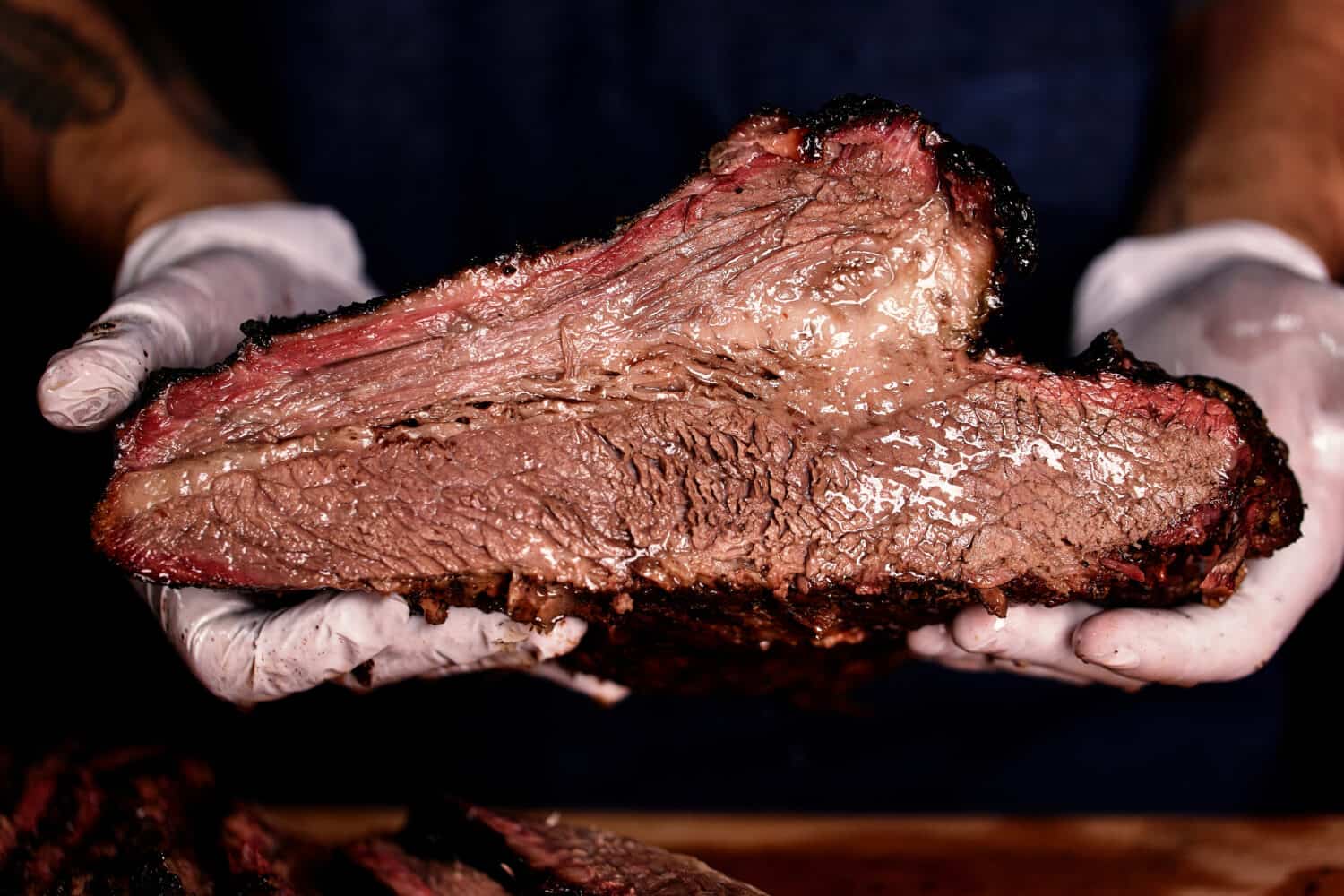
©J_K/Shutterstock.com
At a barbecue event in New York City some years ago, when the discussion turned to various regional ‘cue styles, TV news legend Dan Rather, born just southwest of Houston, said “I don’t know what all this talk is about. Barbecue comes from Texas, and it’s beef.” He may have been tweaking the other participants, but the fact remains that when the subject is barbecue in Texas, the emblematic meat is brisket. Surprisingly, smoked brisket was first introduced to the state by Ashkenazi Jewish immigrants in the late 19th century, and was originally served as a sliced deli meat. It meshed with the state’s longstanding tradition of outdoor grilling and was adopted and adapted as a staple of Texas barbecue in the 1930s — perhaps originally at the still-extant Black’s BBQ in Lockhart, about 30 miles south of Austin.
Chicken-fried steak

©"Chicken Fried Steak" by KB35 is licensed under BY 2.0. - Original / License
This preparation of a piece of beef, usually cube steak (sirloin tenderized by pounding), dredged in flour and deep- or pan-fried, may be part of the official state meal in Oklahoma, but most sources attribute its creation to that state’s southern neighbor, where it may have been a variation on breaded, fried veal dish called Wiener schnitzel, a legacy of the wave of Austrian and German immigration into Texas in the 19th century.
Chili con carne

©"Tonight it's chili con carne in da house" by lejoe is licensed under BY 2.0. - Original / License
Otherwise known simply as “chili” (or, in the vernacular, as “a bowl of red”), this dish of beef cooked with chiles or chile powder, garlic, and cumin probably had its origins — according to food historian Robb Walsh — in the cooking of immigrants from Spain’s Canary Islands who moved to San Antonio in the 18th century. Subsequently, that city became famous for its “chili queens,” who served chili on public squares as early as the 1860s. Today, besides being found in some form or other all over America and beyond, chili is the official state dish of Texas — but note well: Texas chili doesn’t have beans.
Corn dogs
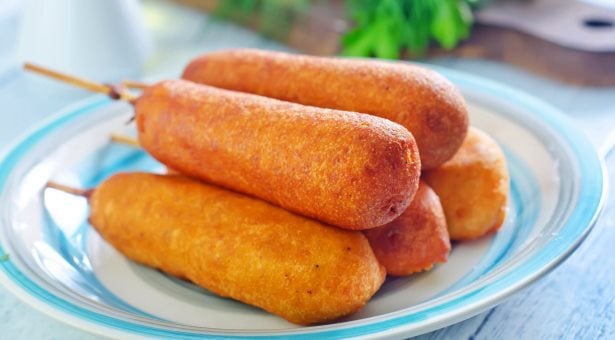
©Gayvoronskaya_Yana/Shutterstock.com
Here’s another gift to Texas, and the rest of America, from German immigrants, who had the idea of encasing Wurst in a corn batter and baking it so that it looked like corn on the cob. Corn dogs were apparently first made as early as the 1920s, but gained a wide audience at the Texas State Fair of 1942. The original ones, though, were knife-and-fork food, and nobody’s quite sure exactly when and where they were first impaled on a stick for easy eating.
Dr Pepper

©Chinnachart Martmoh/iStock via Getty Images
This unique soft drink — now produced by the Keurig Dr Pepper company — is older than Coca-Cola, having been formulated originally by Charles Alderton, a pharmacist in Waco, around 1885. (Though the syrup to make Coke dated back earlier, it was first served as a soft drink at a pharmacy in Atlanta in 1886.)
Fajitas
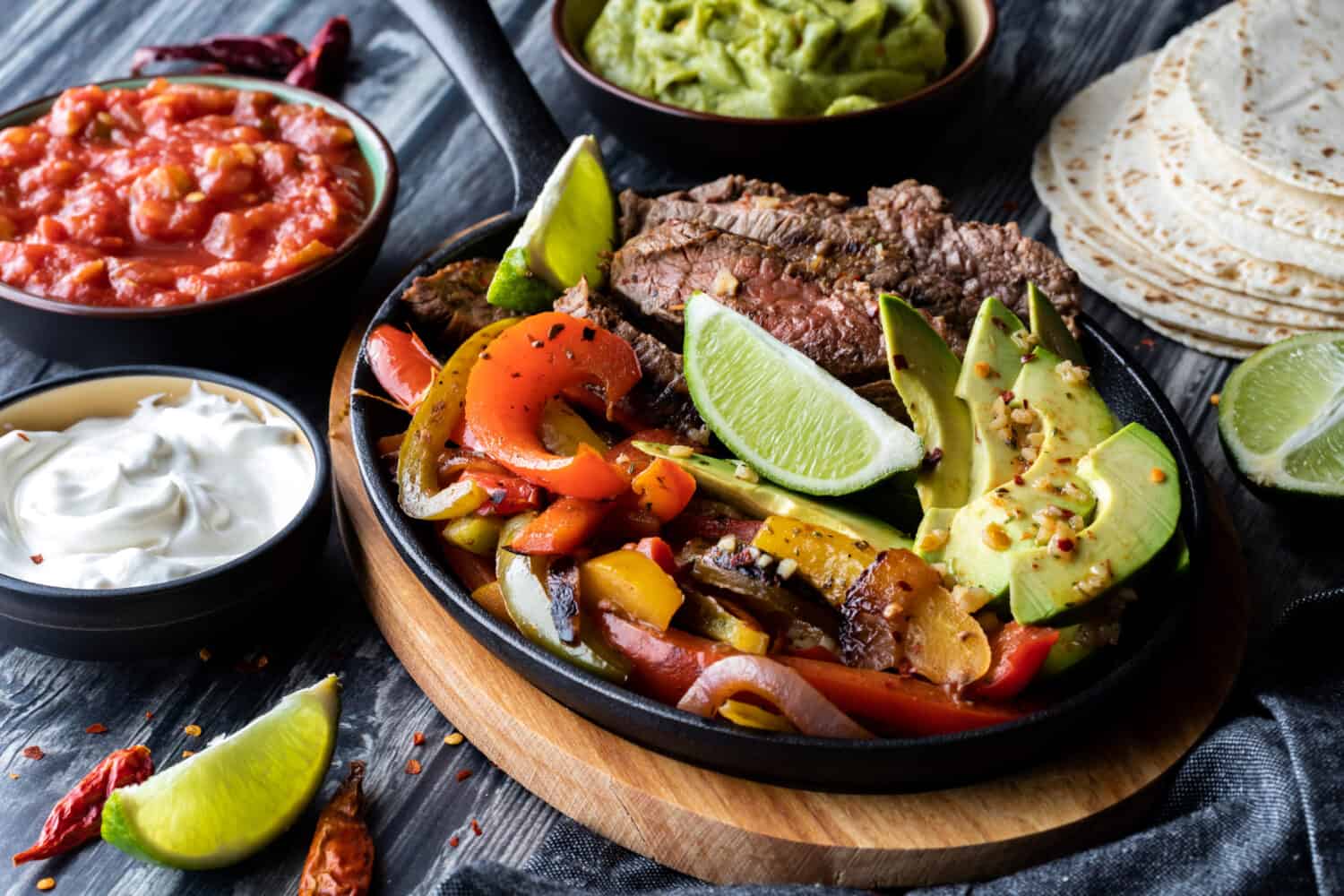
©Toasted Pictures/Shutterstock.com
The name “fajitas” is a diminutive of “faja,” which means belt or strip in Spanish, and fajitas were originally thin strips of meat cut from beef skirt, a flavorful but rather chewy cut of beef from between the brisket and the flank. While the meat itself would have been grilled much earlier on ranches in southern Texas and northern Mexico, fajitas as we know them today — served with bell peppers and onions on a sizzling platter, and not always made from beef — originated in 1973 with Houston restaurateur María Ninfa Laurenzo, who started serving them in taco form out of her tortilleria. They’re still on the menu (either beef or chicken) at the two Houston locations of Ninfa’s, the restaurant she founded.
Fritos
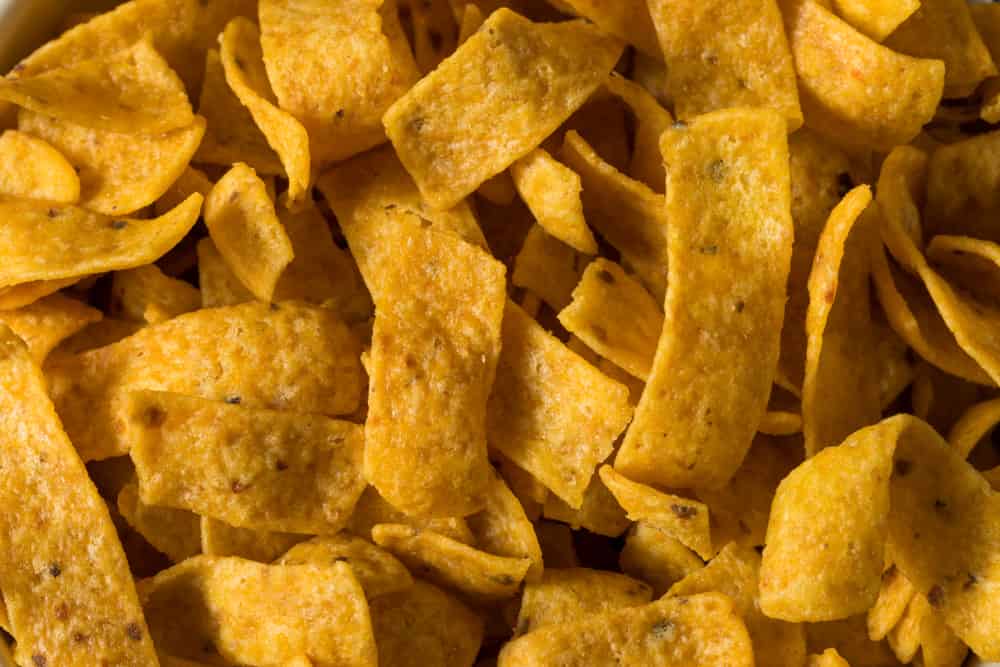
©Brent Hofacker/Shutterstock.com
If you look at the ingredients on the packages of most snack foods, you’ll see a jumble of daunting-sounding additive names. Fritos, on the other hand, are made with just three things: corn, vegetable oil, and salt. They were invented in 1932 by a San Antonio candy-store owner named Charles Elmer Doolin, who wanted to add a salty snack to his product line.
Frito pie

©Brent Hofacker/Shutterstock.com
Here’s a pie that doesn’t have a crust. In its classic form, Frito pie — which was possibly invented by Fritos founder Charles Elmer Doolin’s mother — is nothing but Fritos (see above) topped with chili (see above again) and shredded cheese. Traditionally, there’s not even a plate involved: An old-style Fritos bag, the kind with the metallic-looking interior, is opened at the top and the chili is ladled in. This doesn’t work so well with the all-plastic bags, so today the dish is often served in a bowl, or prepared on a large scale in casserole form.
Frozen margaritas

©"Frozen Margarita" by GillyBerlin is licensed under BY 2.0. - Original / License
The original version of this Mexican-restaurant and spring-break essential may or may not have been developed in Texas, but what’s certain is that the first machine for making it was invented (by repurposing a soft-serve ice cream maker) by Dallas restaurateur Mariano Martinez at his Mariano’s Mexican Cuisine in 1971. According to Smithsonian Magazine, “The innovation forever changed the Tex-Mex restaurant business (placing bars front and center) and triggered the craze for Tex-Mex food.”
Nachos (sort of)

©stockcreations/Shutterstock.com
Okay, nachos weren’t invented in Texas. But they were first made back in 1943 at the behest of a group of military wives from Fort Duncan in Eagle Pass, Texas, at the now-defunct Victory Club in Piedras Negras, Mexico, about five miles across the border. The story is that the restaurant maître d’, Ignacio “Nacho” Anaya, improvised the dish when the women showed up after the cook had gone home. He dubbed it “Nacho’s special” and it soon became just nachos, a dish now found not just all over Texas but all over the world.
Queso

©Brent Hofacker/Shutterstock.com
Queso flameado or queso fundido — literally, flamed or melted cheese — is a popular dish in northern Mexico, using various kinds of cheese, along with fresh or preserved chiles and sometimes chorizo or other ingredients. Queso in the Tex-Mex sense (which is also the sense in which it’s now found far beyond Texas or Mexico), however, is a concoction made with nothing but melted processed cheese (Velveeta is the usual one) with canned chiles from Ro-Tel, a company founded in 1943 in Elsa, Texas (though now owned by the massive Conagra corporation). The first recipe for the dish was published by the company in 1949.
Ruby red grapefruit

©iStock.com/ValentynVolkov
This sweet, flavorful grapefruit variety, with a vibrant red-orange flesh, was discovered growing out of a Thompson grapefruit tree, whose usual issue has pinkish-yellow meat. The cultivar was planted widely in the Rio Grande Valley in 1929, and today it is the most popular grapefruit variety in Texas — and the official state fruit.
Shiner Bock

©"Shiner Bock" by Dave Newman (newmanchu) is licensed under BY 2.0. - Original / License
Texas boasts a number of breweries, both old and new, and Lone Star and Saint Arnold are among the state’s best-known beers. But Shiner Bock is the icon. A group of Czech and German immigrants settled in the town of Shiner, about 65 miles southeast of Austin, in the 1880s, and in 1909 founded a facility to produce the kinds of beer they remembered from back home. Originally called the Shiner Brewing Association, it was renamed the Spoetzl Brewery in honor of its brewmaster — but the beers, of which the German-style Bock is the best-known — retain the Shiner name, and make a case for Texas beer-making excellence all over America today.
Texas sweet onions

©Dominique James/Shutterstock.com
Onions in general are a Texas specialty, and the mild variety, known as Texas Sweets or 1015 onions (the number refers to their recommended planting date — Oct. 15), is the state vegetable. Cultivated exclusively in the Rio Grande Valley, Texas Sweets were developed by a horticulture professor at Texas A&M, and today are found in markets across the country — often edging out other sweet onions like Vidalias from Georgia and Walla Walla from Washington.
Texas toast
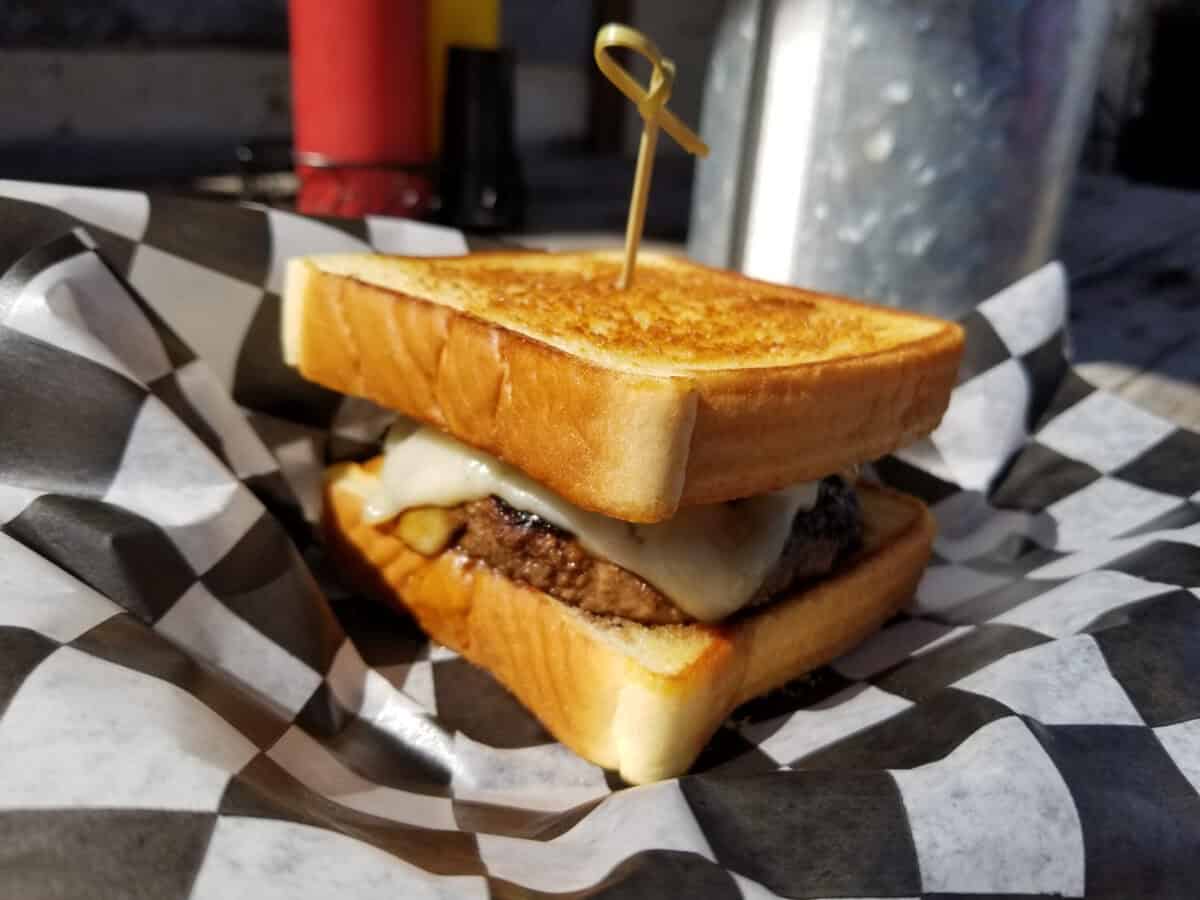
©Anne_K/Shutterstock.com
Double-thick-sliced white bread, slathered with butter on both sides and toasted under a broiler or on a grill, Texas toast was invented at one of the numerous locations of Kirby’s Pig Stand, a pioneering drive-in operation founded in 1921 in Dallas. Texas toast didn’t appear until the 1940s, however, when it was first served at a Kirby’s location in either Denton or Beaumont. It’s now commonly found at BBQ joints and other restaurants (it’s considered the perfect vehicle for chicken-fried steak sandwiches), and there’s even a frozen version from Pepperidge Farm.
The image featured at the top of this post is ©The Image Party/Shutterstock.com.
